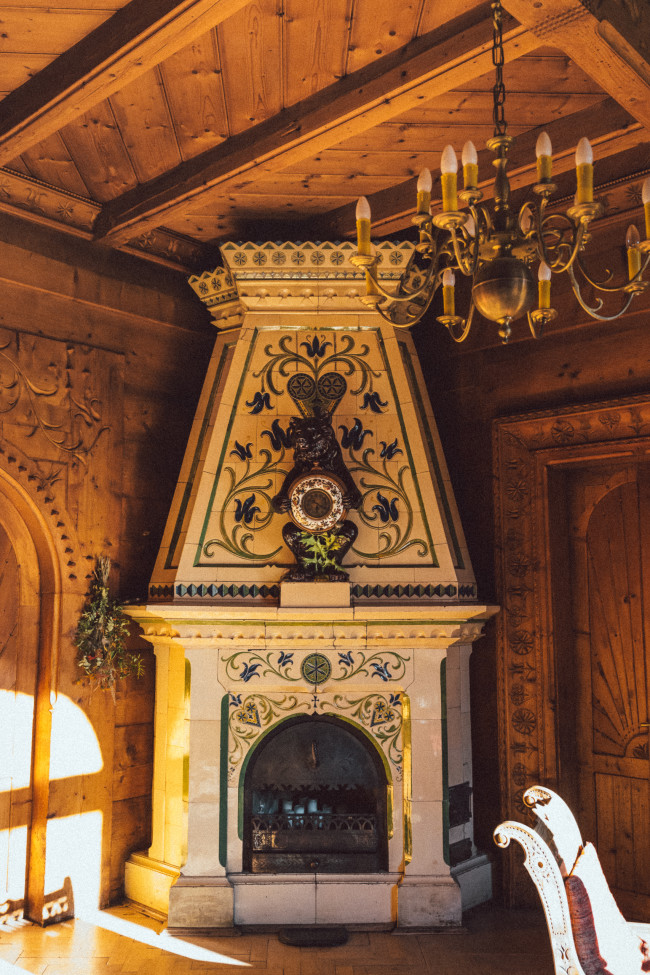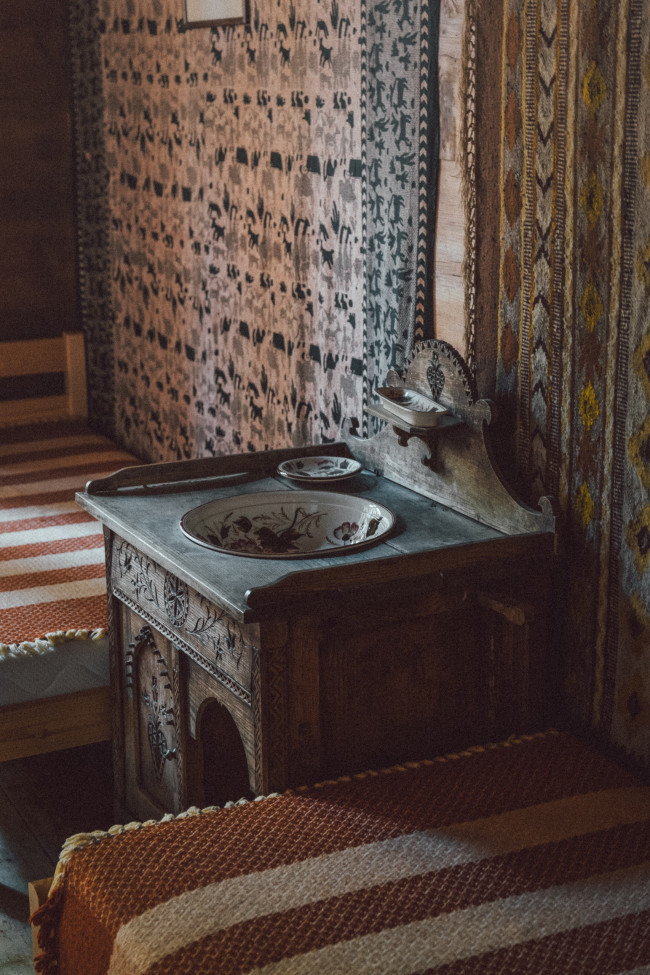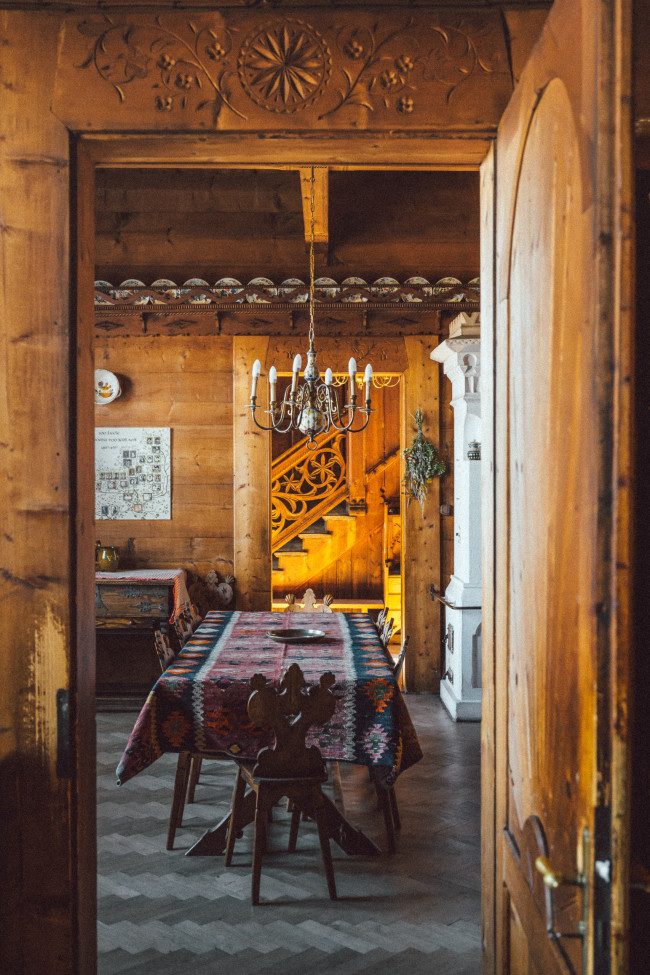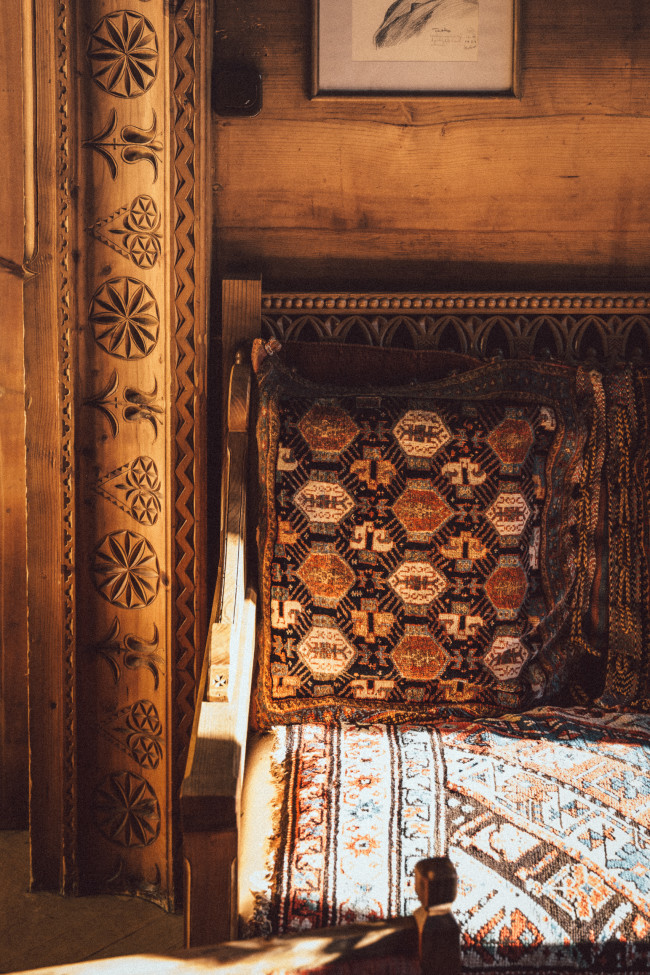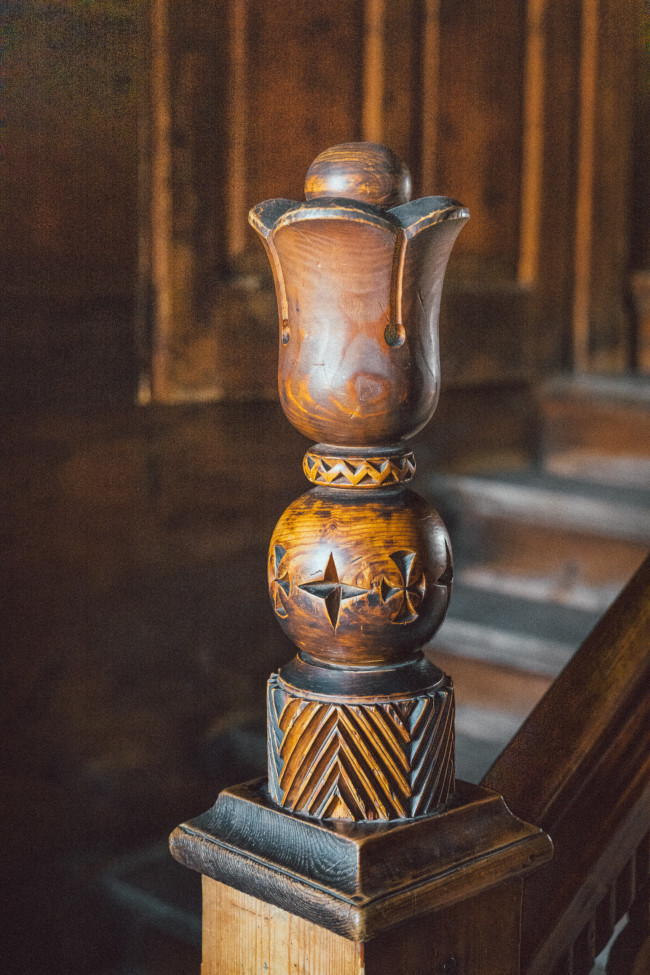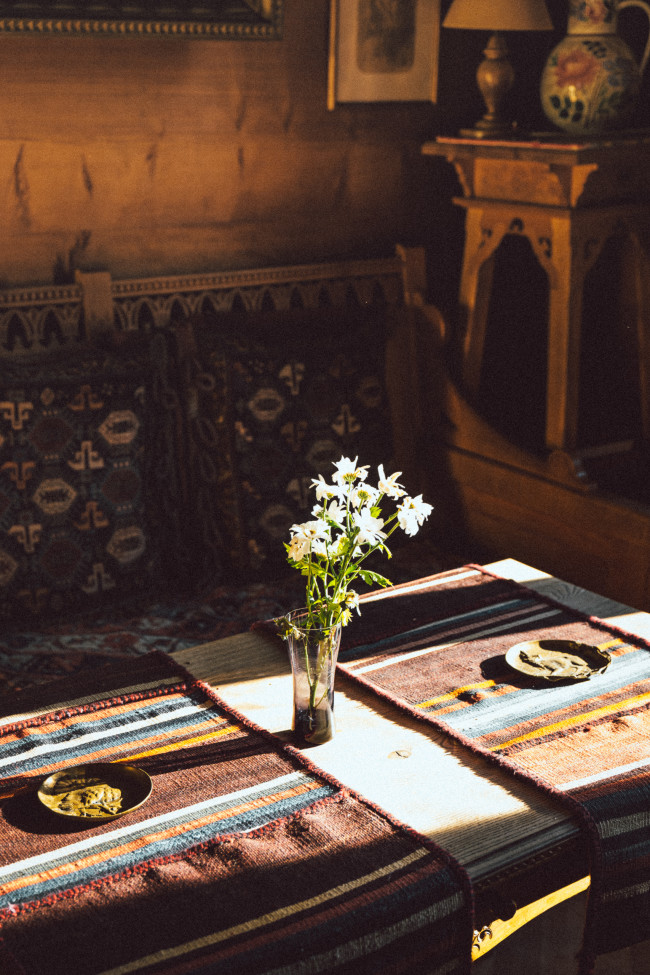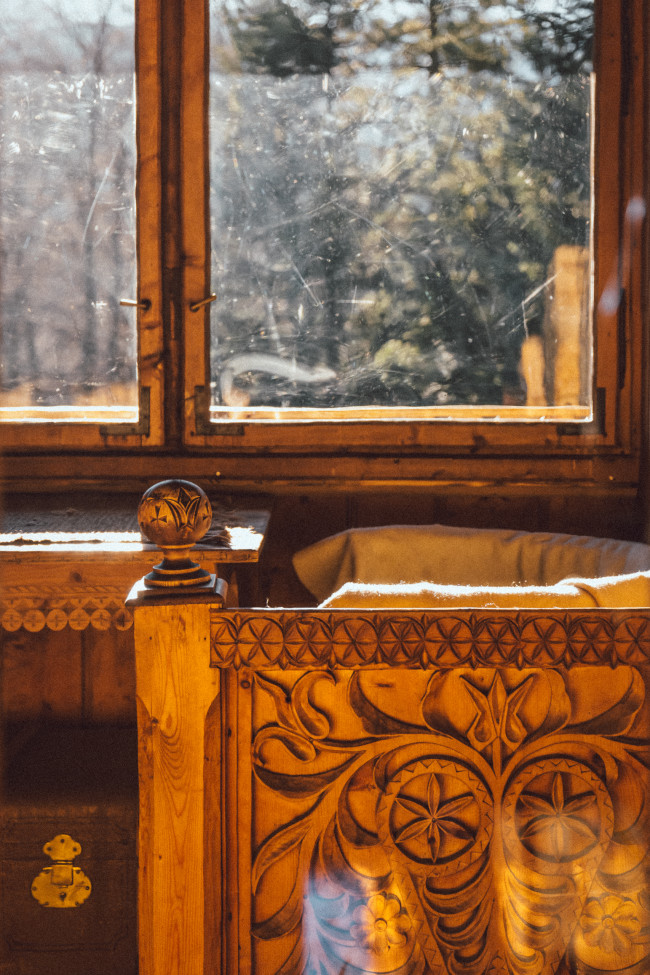The House Under The Firs

text: Lidia Pańków
photo above: National Digital Archives
Stanisław Witkiewicz and Jan Gwalbert Pawlikowski were two towering figures of their time -- noblemen, patriots, thinkers. One was a painter and a writer who took up issues of identity, society and politics. A reform-minded individual, who worried that his motherland was regressing while under foreign rule (For 123 years, Poland was partitioned and occupied by Russia, Prussia, and Austria). A visionary who proselytized an architecture style native to Poland, which he was convinced would not only transform the country’s villages, towns, and cities, but heal downtrodden souls and improve the condition of factory workers.
The other man came from a family of reformists and botanists. He was the heir to the mountain estate of Medyka and the son of a Galician politician. A lover of antiquity, founder of a gardening academy, and an economics professor. He was also an environmentalist, who established the first conservationist organization in Poland.
These two open-minded men had one thing in common: a love for the Tatra mountains. They would collect Zakopane memorabilia and study the regional architecture: double-bayed houses with pitched roofs covered with shingles, the half-log siding, interlocking construction, sun-shaped decorative elements, and scenic verandas. They would observe, admire, deliberate.

Stanisław Witkiewicz, circa 1890, photo from The Tatra Museum in Zakopane
Their collaboration resulted in one of the most beautiful wooden buildings in Poland, as well as one of the most interesting examples of fin de siècle architecture in the country: the House under the Firs, completed in 1897. The architectural model for the impressive project was exhibited at the much-publicized World Fair in Paris in 1900, and later during a show at the Society for the Encouragement of Fine Arts in Warsaw. The house was commissioned for Jan Gwalbert Pawlikowski’s 40th birthday.
After the Pawlikowski family estate in Medyka was requisitioned by the Soviets, the summer property became the family’s main residence. The father brought over his sons to live with him, who were later joined by their wives-- the first ladies of Polish culture. The cream of the crop of late-19th century Polish society passed through the house, as well as the bohemians of the interwar era, and the post-1945 intelligentsia. Guests included poets, painters, composers.
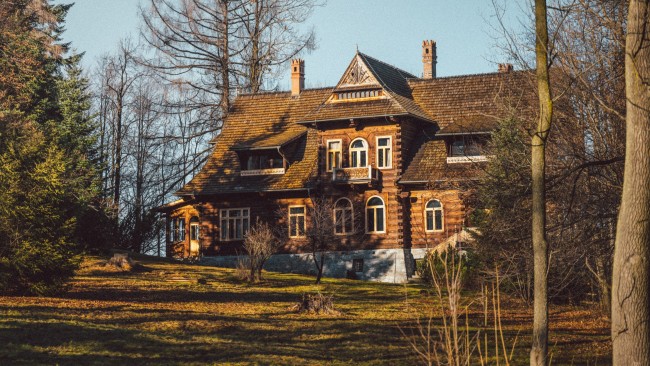
Maria Pawlikowska-Jasnorzewska, the daughter of painter Wojciech Kossak and daughter-in-law of the house’s owner, worked in the villa on the verse that would become her debut volume Blue Almonds, published in 1922. The number of poems she wrote while there and their sensuous titles (they included “Pink Magic,” “Roses for Sappho,” “Silent Lover,” “Dip Me in Him”) suggest that the years she spent with her second husband Jan Gwalbert Pawlikowski were happy ones. The villa also inspired literary play, as evidenced by an absurdist parody of the popular novel by Helena Mniszkówna, Trędowata, written by Maria, her husband, and her sister, the satirist Magdalena Samozwaniec. The House under the Firs was also a place of raucous parties, gatherings, discussions, political conspirations. It was a vibrant and colorful society salon.
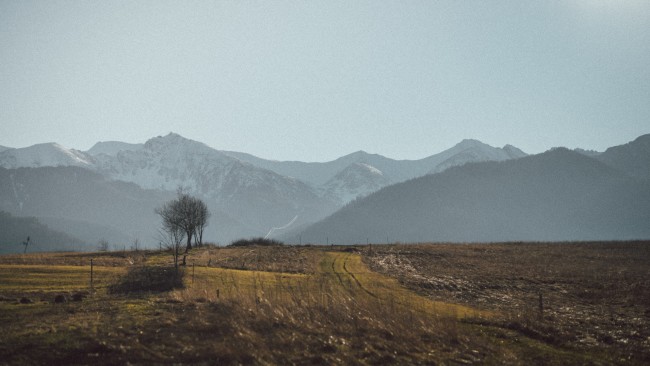
Magic Mountain
Pawlikowski senior was the first to climb Mnich -- a summit of the Tatra mountains that requires significant climbing prowess, since its last 250 meters are nearly vertical. Witkiewicz did not venture into the higher mountains because of his weak health, but his love for the Tatras was just as strong, and he showed it through communing with regional nature and folklore.
When the pair was working out what the House under the Firs would look like, Pawlikowski was no longer an active climber, and he treated Zakopane mostly like a summer retreat. The Villa was supposed to be a place of rest and recreation and the embodiment of a dream for a stable, safe harbor in the turbulent times of the Polish fight for independence.
Witkiewicz came to Zakopane for the healing power of the area’s thermal baths.
It was a lifelong habit. As an impoverished student who starved himself in order to keep studying at the prestigious Munich Academy of Fine Arts, he contracted tuberculosis. When his health would get worse, he would travel to get treatment at the baths, in the Czech Marienbad and Swiss Merano.
But Witkiewicz didn’t go to Zakopane only for its health benefits. It was a special place for him, one of inspiration, and recharging. It’s where he could take a deep breath (both literally and metaphorically), where he studied the wonders of the natural world, chronicled folklore and craftsmanship. When he arrived in Zakopane, he was a mature artist -- he was mesmerized by the style, but he was looking at it through the eyes of a newcomer.
Witkiewicz was a defiant artist from very early on in his endeavors. During his studies at the Academy of Fine Arts in Petersburg in the 1870s, he showed a certain feistiness. He was annoyed by the professors who kept their students on a short leash. He wanted to learn from more serious, groundbreaking mentors, which is why, despite his humble means, he went to Munich. There, under the watchful eye of two outstanding artists -- Hermann Anschütz and Adolfa Heinrich Lier -- he was able to spread his wings. It’s also where he met Aleksander Gierymski, Józef Chełmoński and Henryk Siemiradzki, fellow students who inspired him (and famous future artists). Witkiewicz could feel like he was in the best company possible, and that the creative ferment would be enough fuel for many years of his own undertakings.
He’d be rewarded for the rough and challenging Munich period by his years in Warsaw, when he opened a studio-salon in the European Hotel (Hotel Europejski). The artist became well-established in the city’s intellectual and artistic circles, along with the famous writers Bolesław Prus, Henryk Sienkiewicz, and famous actress Helena Modrzejewska. But his heart belonged not in Warsaw, which was under the oppressive yoke of the Russian tsar at the time, but in the Polish mountains, where one could gaze far and high.
Warsaw was at first a backward city oppressed by the Russians, filled with contrasts between the rich and the poor, a provincial center that caused Polish patriots pain and resentment. After 1918, it was a dynamically developing capital of a unified country, filled with social and urban planning experiments.
Meanwhile, Zakopane was emerging as a place of recreation, climbing, love affairs, the epicenter of “a new sportiness, expressed in fashions and attitudes,” as people wrote at the time.
The spa town was like a place out of Thomas Mann’s Magic Mountain, where you could suspend the norms that ruled the rest of the land, throw yourself into the fun and the romance, where you could experience artistic exultations and risky expeditions.
Among the patients of the thermal baths enthralled with the beauty of the unconquered mountains, were members of the Polish elite: doctors, engineers, politicians, industrialists. The spa town quickly became a buzzing colony for all sorts of artists, who would create new movements , drawing freely from futurism, cubism, and dadaism.
Against ugliness
The House under the Firs became one of the most representative examples of the Zakopane style. The building was Pawlikowski’s personal manifesto: by erecting a magnificent summer residence, which some would call a castle because of its sheer size, the man showed his appreciation for the style Witkiewicz was proselytizing. At first the professor-naturalist planned to build a smaller recreational home, but purportedly the artist was able to convince him to expand the project. Stanisław Witkiewicz picked a plot on the slope of a hill called Koziniec — the pitched terrain got his imagination going. Designing an asymmetric foundation, four meters on the east side, and only half a meter on the west side, he achieved a dramatic effect. That’s why the wooden structure gets compared to a Romanesque castle and a medieval manor. The villa is seen as a culmination of Witkiewicz’s fascination with the Zakopane style — and lampooned by some critics for the author’s frivolousness.
Indeed, Witkiewicz’s style — just like all the national and folk trends emerging in Europe at the time — is an interpretation of various motifs native to the Podhale region. Using them the architect believed that he was reaching that which is endemic, authentic, untouched. This kind of return to the roots and appreciation for traditional craftsmanship, fed by a resistance to industrialization was becoming popular all across Europe.
Russian architects were using Siberian designs, the Fins were drawing from native Karelian building tradition, while the Norwegians took inspiration from medieval wooden churches, creating the Dragestil style. Ridding the aesthetic of industrial influences and returning to time-consuming craftsmanship were supposed to be a positive influence on both the elites and workers, who’d been reduced to the role of mere tools.
Witkiewicz’s vision was both bold and all-encompassing: the artist believed in social rejuvenation. His architecture wasn’t meant to be just a regional effort — it was supposed to furnish the entire country! In the 1920s, Poland would see new ideas that would revolutionize urban planning — the functional, international style of Le Corbusier, the Bauhaus school, the Soviet constructivists and Dutch neoplasticism. But for now Witkiewicz did not have to fear for his position — his name was on the list of 12 most influential architects of the 19th century, curated by the editors of the Warsaw Courier newspaper.
Collective work
In addition to the model of the house that was exhibited in Paris and Warsaw, the Tatra Museum in Zakopane also has in its collection an archival photo of the model when it was freshly made, surrounded by a group of animated Zakopane locals. Their shoes and walking sticks are half-sunken in the snow, and their dynamic poses and lively looks suggest they are having a spirited discussion. Who are they?
They are actually the authors of said model. Thankfully, we know their names, just as we know who exactly was on the team that built the House under the Firs, led by the acclaimed builder Wojciech Roj. If it weren’t for the talent, determination, and experience of the local experts, who learned their craftsmanship from their fathers and grandfathers, the manor would not have been so magnificent and elaborate.
The building was erected in two years: in 1897, Jan Gwalbert and his family spent their first vacation in the House under the Firs. A rambunctious party was organized to celebrate the end of the summer season, with invitations extended to all the carpenters and neighbors. Participants recounted that the house shook from the dancing, and the entire area echoed with sounds of song. One by one, empty barrels of alcohol were said to be tumbling down the stairs.
From 1904 on, the owner of the villa started living there permanently. When the family residence in Medyka was lost as a result of the Soviet invasion of Poland in 1939, the House under the Firs became the Pawlikowski family hearth. It’s nearly a miracle that the house survived World War Two unscathed. It avoided, for example, getting requisitioned by the Germans because it did not yet have electricity.
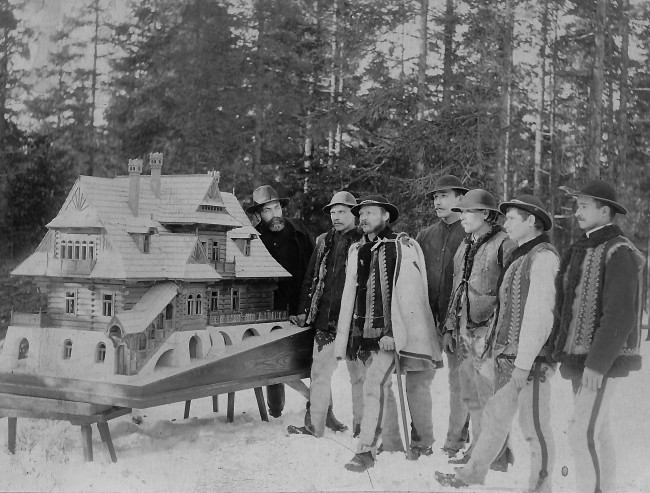
Societal idyll and creative silence
The estate, invisible to the random passerby, was dotted by firs, hence the name. The construction was slow-going, revealing the house in stages, all in accordance with the art of carpentry and other crafts: tile work, masonry, embroidery, joinery, blacksmithing.
Even after the residents moved in, the Pawlikowskis along with Witkiewicz and the team would keep refining the interior: they installed a stove with a special ceramic hood ordered from a well-known pottery school. A decorative chain that was attached to the stove was commissioned from the renowned Górecki factory in Kraków, the same establishment that made the giant cross that adorns the Giewont, the most famous mountain in the Tatras. The sitting room furniture was made in the Zakopane style, with carpenter Kazimierz Sieczka’s personal twist. Józef Kaspruś and Jędrzej Krzeptowski furnished the guest rooms and the bedrooms. The architect’s wife, Maria Witkiewicz, alumna of the Warsaw Conservatory and professional music teacher, took over all of the interior design for the house. She personally embroidered the “parzenica” pattern on the curtains -- a signature ornament that the locals wear on their pants. As proof of his friendship and admiration for the artist, Pawlikowski bought Witkiewicz’s painting for the house. His “Sheep in a Fog” hung across from a Tatra mountain landscape by Leon Dembowski.
The villa quickly became a place where you ought to be seen. The poets Maryla Wolska and Jan Kasprowicz would pass through, as would the writer Henryk Sienkiewicz and the vanguard of Polish painters, including Jacek Malczewski, Jan Stanisławski, Leon Wyczółkowski. The composer Karol Szymanowski, and the writers Stefan Żeromski, Władysław Reymont, Kazimierz Przerwa-Tetmajer would also visit.
In later years, the house attracted well-known, eccentric couples from the bohemian circles of Kraków and Zakopane: the artists Karol and Zofia Stryjeński, the painter Andrzej Pronaszko, the futurist painter and philosopher Leon Chwistek, and Stanisław Ignacy Witkiewicz, the famous “Witkacy,” Stanisław Witkiewicz’s son, and one of the more colorful and unconventional personalities of the interwar period. The extravagant and sometimes demonic man would divide his time between Zakopane and Warsaw, deftly building his image as a painter, screenwriter, society portrait artist.
There are inscriptions at the Villa that show that it attracted guests from all over the world: the Mediterranean, the Balkans, the Americas, Australia and New Zealand. The house buzzed with salon life and fun, but sometimes it would become enveloped by silence. For the elder Pawlikowski the house was also a refuge, where he was able to concentrate on his studies of the famous Polish Romantic poet Słowacki. Surrounded by loved ones and friends, he wrote about the environment, regional art, he worked on subsequent chapters of his encyclopedia, he organized meetings with local naturalists, and from 1935, he worked on the magazine “Wierchy.”
What does the villa offer today?
Surrounded by other monumental buildings from the turn of the 19th century that combine folk style with art deco, and in the overall visual chaos of Zakopane, the integrity of the house is a relief for all the senses. Villa guests speak of the painterly effects of the building’s architecture -- you can easily find in the soft, elaborate forms of the building a certain harmony. The finishings are perfect, and there’s a sense of deep understanding of the importance of natural materials, the wood that residents have had to cohabitate with for a hundred years. It’s also comforting that the house has remained in the hands of one family, despite the post-war turmoil in Poland and communist politics that were so harmful to architecture.
Witkiewicz’s visionary project of filling Poland with native architecture didn’t stand a chance, just like other overly romantic dreams of the time, of a spiritual renewal through a return to the roots. But even today, Witkiewicz’s fascination with the Zakopane style is understandable.
Avant-garde architects try to interpret this style over and over, taking inspiration from the pitched roofs and half-log siding. But they lack Witkiewicz’s mad energy. “Having been there many times, I still haven’t found any fault with the building,” one of the guests writes.

